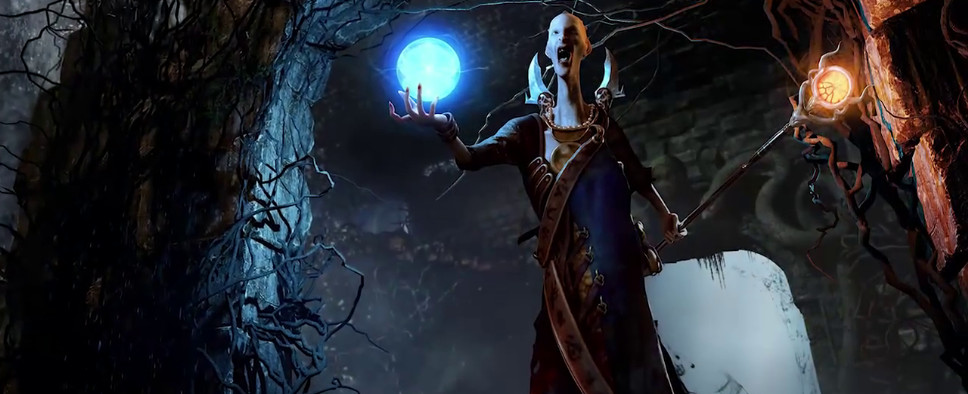The Bard's Tale IV Update #29: Combat
-
Category: News ArchiveHits: 1756

The latest update for The Bard's Tale IV, relayed to us via Kickstarter, covers the preliminary design for the game's combat system. With synergies between its 4x4 grid combat arenas and more elaborate and unique attacks, the folks at inXile hope to overcome a style of decision-making that they feel was excessively simple in previous first-person turn-based dungeon crawlers. Here's an excerpt on the attack types:
At the core of our design for The Bard's Tale IV is the idea that all attacks and abilities should be interesting to use. We are trying to move away from giving every character the same basic attack ability that just does damage. While doing single target damage is effective, there isn't a lot of strategy revolving around the choice of whether or not to attack your enemy. The answer is generally yes. That's an example of a missed strategic opportunity we wanted to capitalize on. Your weapons, spells, and abilities will offer their own unique attack types that often have different built-in properties to set them apart. You're saving the world, gosh darn it, so you'd better do something heroic! These differences can be minor or major, but the point is that each attack is designed to shine in different scenarios. Throughout your adventure you'll encounter enemies using new abilities and tactics. You'll need to keep evolving your strategy to be victorious.
When examining the anatomy of an attack and making it interesting to use, we have a number of qualities at our disposal. These include Attack Pattern, Damage, Damage Type, Special Effect, and Cost (Just to name a few). In this update, we'll cover Attack pattern, Damage, and Special Effects. We'll cover the other elements in a later update. Let's start by breaking these down one at a time.
...
Now that we know who we're attacking, let's talk about the bloody part: Damage. Damage is a pretty simple calculation. Damage comes from the character's stats, which are sourced from a variety of places including gear, skills, level, etc. Most of the time, damage is a fixed amount instead of a random range. This really allows you to plan out the perfect combo, that will for sure take that ogre down before he crushes your skull in. There are some abilities that do random damage, but that random element is something special about the ability that makes it unique.
Once damage is dealt, then we apply any additional effects. This is where attacks start to get more interesting. An effect might knock an enemy to the side, exposing that frail caster he was protecting. Another effect might be a poison that damages an enemy over time. Yet another might be a debuff that reduces a target's armor, softening it up for your allies. You get the idea - effects open up a world of possibilities for us to play with.
To give you a more real-world example of how attacks can synergize in interesting ways, during our playtesting, one of the synergies that the warriors have been using is a bleed and bash combo. Axe-wielding warriors can cause their target to bleed, which causes them to take damage whenever they move around the battlefield. You can imagine them exerting themselves and gushing blood, leaving a red trail behind them as they bleed out. Once that effect has been applied, shield and club wielding warriors get to work. These blunt armaments can often knock an enemy from one grid square to the next, throwing them out of their ideal position and opening up attacks to the more vulnerable glass cannons they've been protecting. The nice thing is, when you forcibly move an enemy, it also triggers the bleeding effect. If done right, you can get a nice ping-pong combo by bashing a bleeding enemy back and forth between warriors, each time causing them to take bonus bleed damage.

